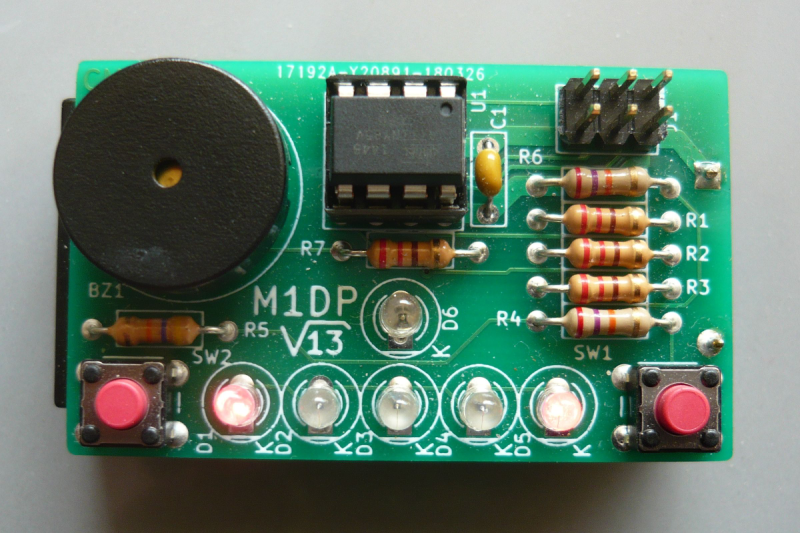What makes a game a game? Like, how do we know that we’re looking at a variation of PONG when confronted with one? And how do we know how to play it? [Bertho] sought to answer this question as he designed what is probably the smallest-ever 1-D PONG game. His answer involves charlieplexing LEDs, using a voltage divider to save I/O pins, and a couple of AAAs that should last for a long, long time.
[Bertho]’s Minimum 1-D PONG, or m1dp for short, puts an ATTiny85 through its paces as gameplay quickly progresses from ‘I got this’ to ‘no one could possibly keep this up’. This state machine sleeps until one of the two buttons is pressed, at which time a wait animation starts. The action begins with the next button press.
Game play across only five LEDs makes for some pretty intense action, too. Fortunately, the buzzer is a big part of the experience. It sounds one tone for each LED when the ball is in play, and a different tone to confirm button presses. [Bertho] saved so many I/O pins with charlieplexing that he added a green LED that lights up when it’s OK to return the ball. If we were playing, we’d keep our eye on this LED instead of trying to watch the ball. We’re serving the demo after the break point, so don’t let it get past you.
For a study in minimalism, there sure is a lot going on here with all the different tones and animations. If you’d prefer maximalist 1-D PONG, there’s always LED strips. If dungeon crawlers with satisfying hardware are more your thing, you really need to check out Twang.
Via [Dangerous Prototypes]















This kinda reminds me of that 1D Tetris game the Rockbox team included on their alternative iPod firmware.
I still cant figure out how to lose, it’s frustrating!!!!
This on the other hand is actually a game of timing skill, albeit just waiting till the “ball” goes to your “paddle” in a fixed location and direction.
Simple games are sometimes amusing…. unless it is 1D Tetris!
I had a similar game when I was a kid — it had 10 leds, and the longer/closer you waited for it to get to your goal before you pushed the button, the faster it would bounce back to the other side. A couple of skilled players could really get some intense volleys going.
That is how the color (full) version works. It has 60 RGB leds and a “base” at each end. The longer you wait hitting back, the harder you hit back accelerating the ball. The full version has several extra mechanics (boost option, boost cost, adaptive speed, scoring) to make the game’s dynamics more interesting.
The link for this is dead for me, does anyone have an alternative?